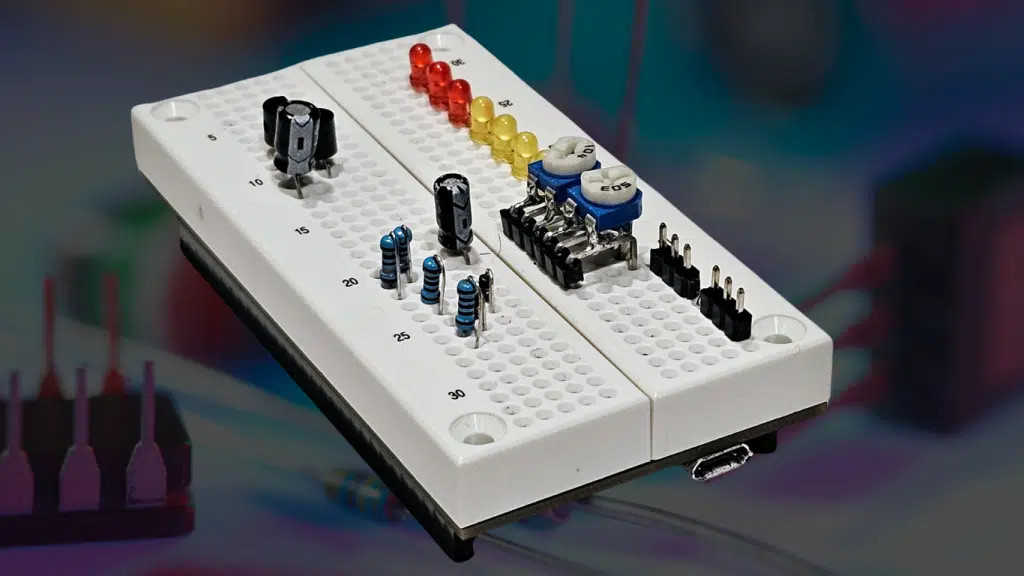The solderless breadboard is perhaps the electronic hobbyist’s most commonly used tool, but let’s be honest, it isn’t exactly anyone’s favorite piece of gear. Even if you’ve got an infinite supply of jumpers in just the right size, any mildly complex circuit quickly becomes a nightmare to plan out and assemble. To say nothing of the annoyance of trying to track down an intermittent glitch, only to find you’ve got a loose wire someplace…
The Sandwizz Breadboard hopes to address those problems, and more, by turning the classic breadboard into a high-tech electronics prototyping platform. The Sandwizz not only includes an integrated power supply capable of providing between 1.8 and 5 volts DC, but also features an array of integrated digital and analog components. What’s more, the programmable connection system lets you virtually “wire” the internal and external components instead of wresting with jumper wires.
To configure the Sandwizz, you just need to connect to the device’s serial interface with your favorite terminal emulator and work your way through its text-based menus. You can also export a netlist file from your KiCad schematic and upload it into the board to make all the necessary connections automatically. This lets you make the leap from concept to physical prototype in literally seconds.

If all this sounds a bit familiar, it’s probably because the Sandwizz clearly has a lot in common with the Jumperless. Created by [Kevin Santo Cappuccio], Jumperless uses an array of analog crosspoint switches to connect devices on the breadboard without the need for any jumpers (hence the name), and also uses a serial interface to configure the netlist. Jumperless uses RGB LEDs to indicate connections directly on the breadboard, and features some integrated analog and digital diagnostic tools, as well as the ability to take voltage and current measurements.
On paper it does sound like the Sandwizz offers some advantages over the Jumperless. The collection of onboard circuit components sounds very interesting, but the documentation seems pretty vague on what’s included. The expandability that lets you connect multiple Sandwizz boards together to create a larger workspace also looks nice, but depending on how much these things cost, having more than one might be a tall order for the average hobbyist.
But the biggest difference between the two is that the Jumperless is open source hardware and is available for purchase right now, while the Sandwizz is still working its way towards a Kickstarter currently scheduled for early June. The limited documentation and AI-voiced video below the break don’t exactly instill us with confidence, but to be fair, we can’t pass judgement on it until we can see how it works in the real-world. In the meantime, we’re interested to see where this new competition in the world of smart breadboards will take us.
Thanks to [paulvdh] for the tip.
